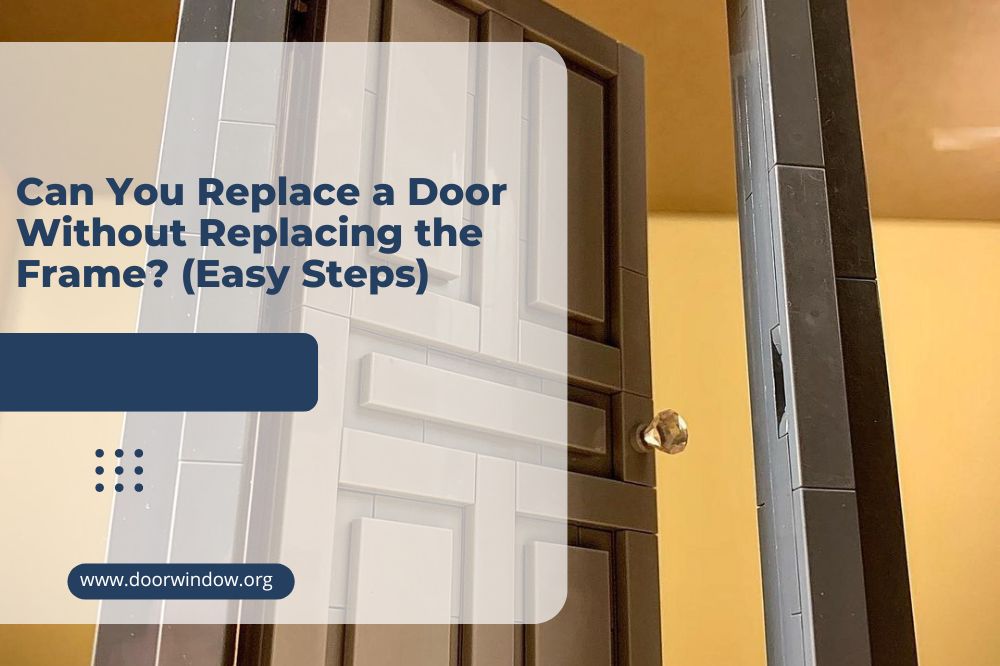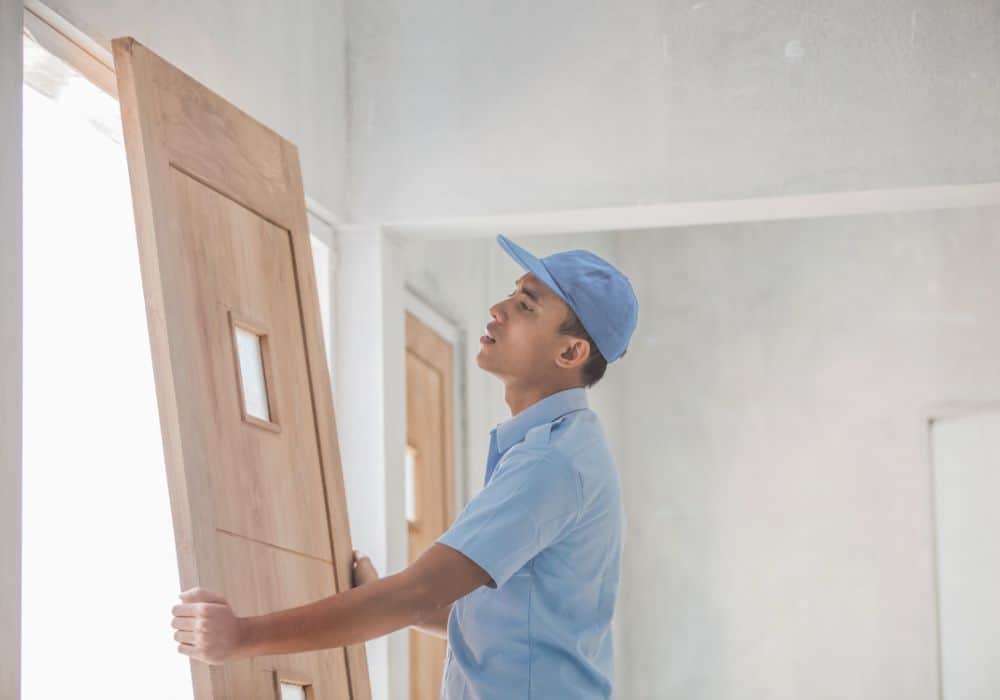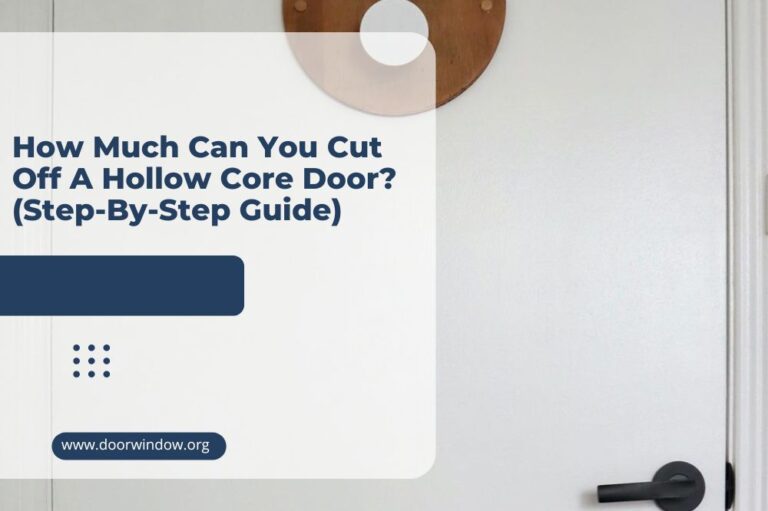Can You Replace a Door Without Replacing the Frame? (Easy Steps)

Replacing a door in your home, whether inside or outside, changes the look of the particular area. This is especially true if you use a door with a modern appeal. However, aesthetics alone are not the only reason for replacing your door; it may be damaged or weak.
But what if the frame is still intact and does not need a replacement? Can you replace a door without replacing the frame? It is possible to replace a door without changing the frame. In other words, you can put a new door into an opening with an old frame. Let’s discuss how you can do it.
How to Replace the Door Without Removing the Frame
Before getting a new door that fits the frame, ensure you have the correct measurement for the opening. That means measuring the length, width, and breadth of the frame and opening before paying for the door. If you are unsure of how to measure them, get a trained helper to ensure professionalism.
It is typically better and more economical to get a door with slightly bigger dimensions or measurements than the opening where it will fit. Also, choose a door that is not precut; that way, you can use your measurements to cut the new door to fit the frame and opening.
Tools You’ll Need
This job is somewhat simple, so it does not require complicated or expensive tools. All you need are:
- A hammer
- A chisel
- A screw gun
If you cannot find a screw gun, replace it with a screwdriver for unthreading and threading the hinge nails. Otherwise, use a hammer to secure the nails through the hinges to the door and frame.
Step One: Removing the Old Door
You will need a cordless gun or another wireless tool to unscrew the bolts on the door hinges. This is the first step to removing the door. Loosen the screws but do not completely remove them from the hinges. Let them hang on the old door.
Once done, carefully lay the door down and remove the door knob so that it can lie flat. Next, place the new door on top of it and carefully trace the hinges’ location from the old door’s side to that of the new one using a pencil. Ensure both doors rest flush against each other around the perimeter.
With both doors lying against each other, remove the hinges with the screws. Then, prepare them for installation on the new door. But if the new door comes with hinges, you can discard the old ones. You can also take this opportunity to trim the excesses if the new door is bigger than the old one.
Step Two: Chiseling the Mortises
The next step is to chisel the cutouts on the frame so they can accommodate the new door’s hinges. Check to see how the hinge mortise is positioned on the old frame and measure the positioning on the new door. Then, you can correctly chisel the cutouts or change the new door’s hinge position.
Step Three: Opening Bolt Holes
Now, check for holes and positions for the bolts on the new door and where they will fit on the frame. As with the cutouts, check the old slab door to see the correct measurements. You can change the bolt position or create new holes if necessary.
Do the same with the door handles and deadbolts; check to see where the holes in the door are and how they will fit with the frame. You must carefully follow the instructions to get the measurements so that the new door will fit as the old one did.
Step Four: Installing the New Door
The final step is to install the new door into the frame. You will need to insert the hinge plates into the cutouts or mortises to start installing the new door. Ensure the plates fit perfectly into the holes; otherwise, you will need to continue chiseling until you get the correct fit for the hinge plates.
If the new door comes with hinges, check the cutouts on the old frame. But if you are reusing the old hinges, you will need to check the hinge slots on the side of the door to see how they fit the old hinge pins.
Now, align the hinges to the new door and gently push the hinge plates into place, securing them with a cordless screw gun. Then, align the door to the frame or door jamb, and screw the hinges into the frame using the screw gun or screwdriver.
What to Consider When Using an Old Frame for a New Door
The first thing to check is the condition of the frame. Many door frames wear out at the same speed as the doors they support. Another thing to check is the availability of the specific door to fit the frame. Also, check the cost of buying only the door and compare it to the cost of both the door and frame.
1. Frame Condition
Inspect the existing frame to ensure it is in good condition before buying a new door without a frame. The reason is that the frame performs just as hard as the door during usage. Sometimes, there may be scratches, dents, or other external damage that only reveals when you remove the door.
If the frame is wood, you must ensure there is no termite infestation or wood rot. This is particularly true if you are handling exterior doors. Check to ensure it is sturdy enough to hold the door for the duration of usage. If it appears weak, consider replacing it.
2. Door-without-Frame Availability
There are many door types that you can buy without the frames. So, you will find many varieties from which you can select. However, you must determine whether or not the frame you want to reuse fits the specific door of your choice.
You must also have the correct frame measurements with which to select a new door. But get a bigger door that will allow you to cut to fit the dimensions of the existing opening.
3. Cost
An important part of buying a door without a frame is the cost. Compare the cost of a frameless door to the cost of one that comes with a frame. If the cost is the same, you may want to replace the door and frame, especially if you are unsure of the frame’s condition.
Conclusion
It should come as a relief that you can replace a door without changing the existing door frame. But you must select the door that fits the frame and use the correct measurements for proper hinge and door knob installation.
It is always best to replace the door and frame because both undergo the same rigors and years of use. While the frame may look to be in good shape, it may have internal damage that will only manifest after installing a new door. Besides, it may be more cost-effective to do a complete door replacement.











